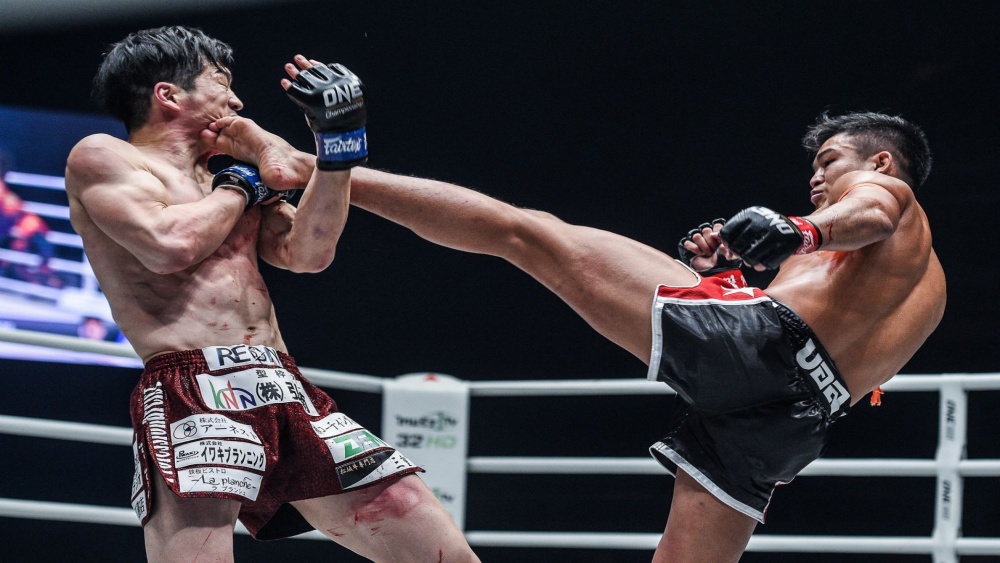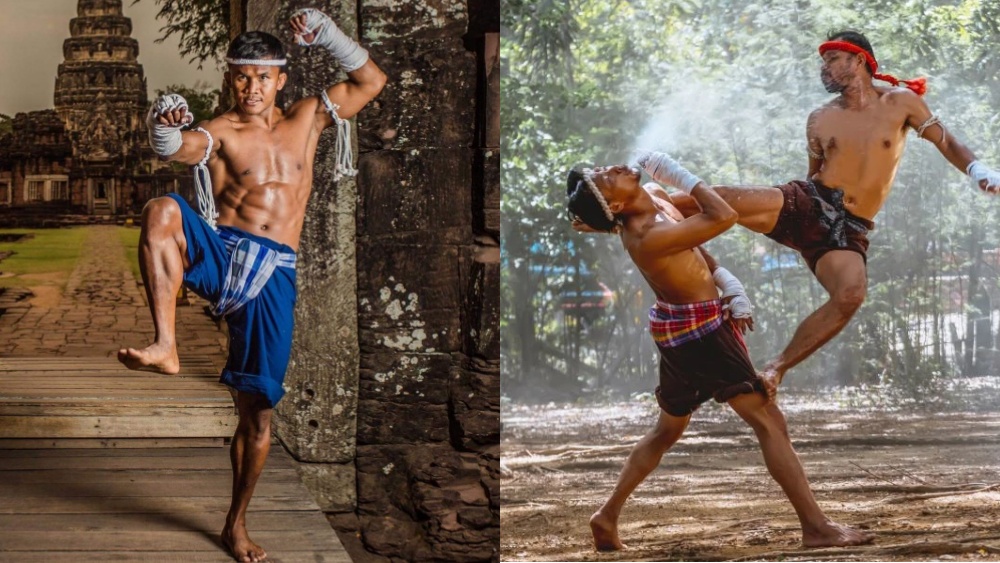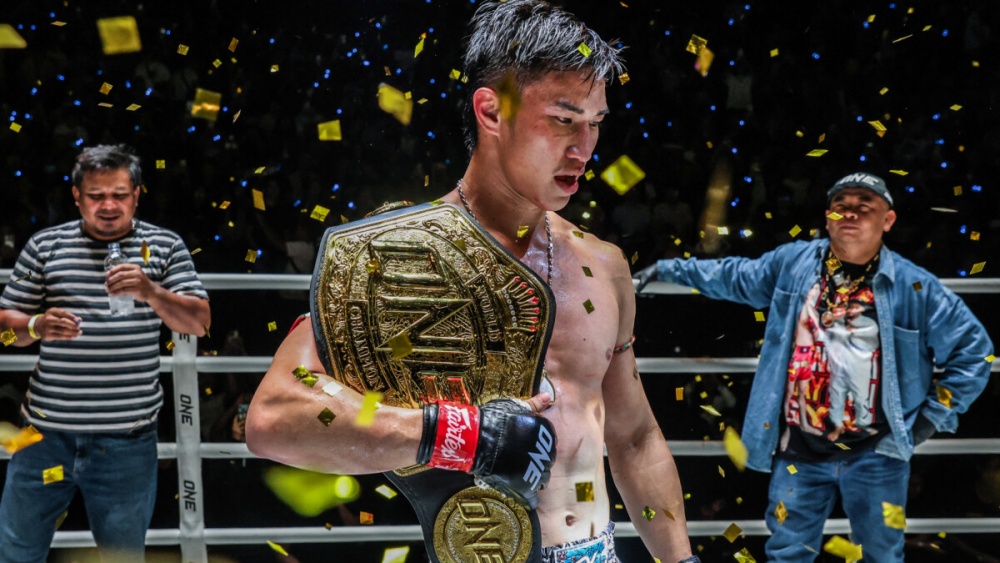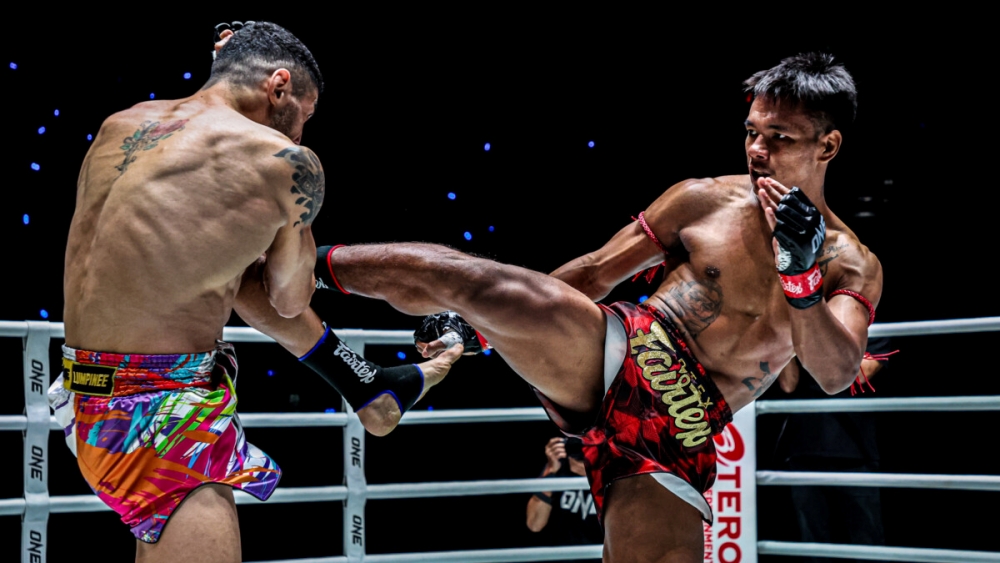The debate regarding the number of rounds in Muay Thai bouts is an ongoing discussion among practitioners and enthusiasts. Traditionally, in highly recognised stadiums like Lumpinee and Rajadamnern, the more prestigious Muay Thai fights consist of five rounds, each lasting three minutes, with a two-minute break between rounds.
There are organisational differences in the lengths of rounds such as the case with ONE Championship’s ONE Super Series bouts, and MAX Muay Thai where fighters are encouraged to push the pace in order to put on a faster-paced show for the audience.
The debate that follows is whether to stick to a more traditional round length or go for various modified bout lengths. There are differing opinions on whether three rounds would be more suitable for the future of the sport. Let’s explore the arguments for both perspectives.
Arguments For 3 Rounds:
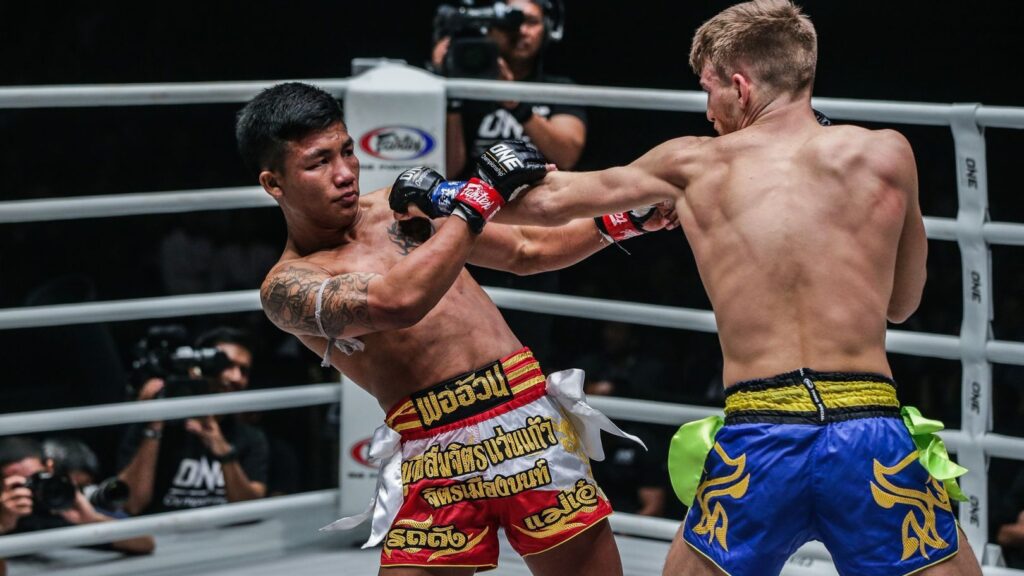
- Accessibility And Viewer Engagement: Shorter fights with three rounds may appeal to a broader audience, including those who are new to the sport. In a fast-paced world, shorter bouts can keep viewers engaged, making it more appealing for casual fans to watch and follow the sport.
- Health And Safety: Muay Thai is a physically demanding sport, and fighters endure significant physical strain throughout a five-round contest. Reducing the number of rounds to three could potentially reduce the risk of long-term health issues for fighters, including cumulative brain trauma and other injuries.
- Fighter Strategy: With fewer rounds, fighters would need to adjust their strategies, potentially leading to more aggressive and action-packed fights. The condensed timeframe could encourage fighters to be more explosive and increase the intensity of each round, resulting in thrilling encounters for spectators.
Arguments For 5 Rounds:
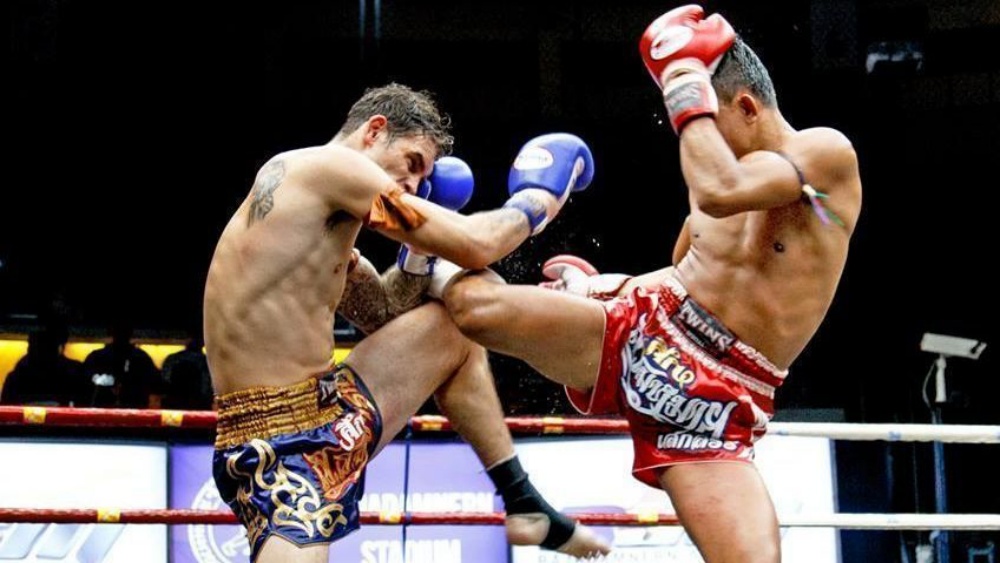
- Tradition And Authenticity: Muay Thai has a rich history, and the traditional format of five-round fights is deeply ingrained in its culture. Many purists argue that altering the number of rounds would deviate from the sport’s authentic roots.
- Technicality And Strategy: Five rounds provide fighters with more opportunities to showcase their technical skills and strategic prowess. The longer duration allows for a gradual progression of the fight, enabling competitors to adjust their tactics and exploit their opponent’s weaknesses over time.
- Championship Fights: Longer fights are often associated with championship bouts, where the stakes are higher. Five-round fights can test fighters’ endurance and mental fortitude, separating the truly elite competitors from the rest. Maintaining the five-round format for title fights ensures a challenging and prestigious standard.
Ultimately, the decision to adopt three rounds or maintain the traditional five-round format for the future of Muay Thai depends on various factors, including the goals of the sport’s governing bodies, the preferences of fighters and fans, and concerns for fighter safety.
It’s possible that different organisations may experiment with alternative formats to cater to different audiences or address specific needs, while others may choose to uphold the traditional rules to preserve the sport’s authenticity and heritage.
The Gambling Connection
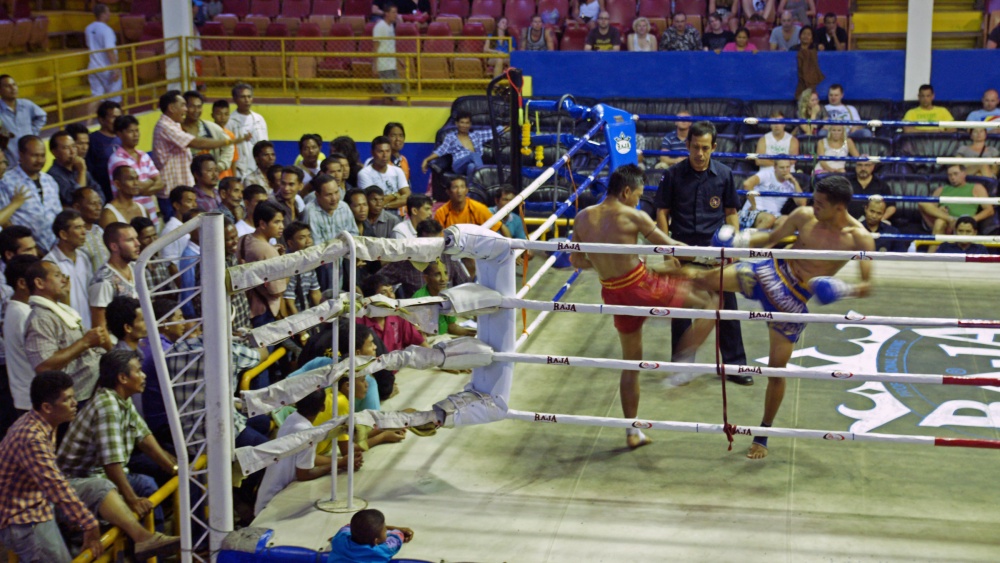
The connection between gambling and the number of rounds in Muay Thai fights is an interesting aspect to consider. While it is true that gambling has historically played a significant role in Muay Thai, it is not the sole reason for the adoption of five rounds. Here’s a breakdown of the relationship between gambling and the round duration in Muay Thai:
- Historical Context: Muay Thai has a long-standing tradition that dates back centuries in Thailand. Gambling has been intertwined with the sport since its early days. Spectators would place bets on the fighters, and the length of the bouts was structured to allow sufficient time for betting opportunities and for the odds to shift during the fight.
- Betting Dynamics: Five rounds provide a longer duration for bettors to analyse the fighters’ performance and make wagers accordingly. It allows for more opportunities to assess the fighters’ skills, strategy, and physical condition, making the gambling experience more engaging for enthusiasts.
- Tradition And Authenticity: Muay Thai is deeply rooted in Thai culture, and the sport’s traditional format of five rounds reflects its historical heritage. The adoption of five rounds was not solely based on gambling considerations but also to uphold the authenticity and cultural significance of the sport.
- Fighter Preparation: The extended duration of five rounds challenges fighters’ endurance, mental resilience, and technical abilities. This aspect is crucial for championship bouts and tests the fighters’ capabilities to withstand a more prolonged contest. It adds a layer of prestige to the title fights, making them more captivating for both spectators and gamblers.
While gambling may have influenced the structure of Muay Thai fights to some extent, it is essential to note that the adoption of five rounds in the sport serves multiple purposes. It allows for a comprehensive display of skills, enhances the strategic element of the fights, and preserves the traditional aspects of the sport. The round duration strikes a balance between engaging the gambling community and maintaining the authenticity and integrity of Muay Thai as a cultural martial art.
What Are Tempo Rounds In A Five-Round Fight?
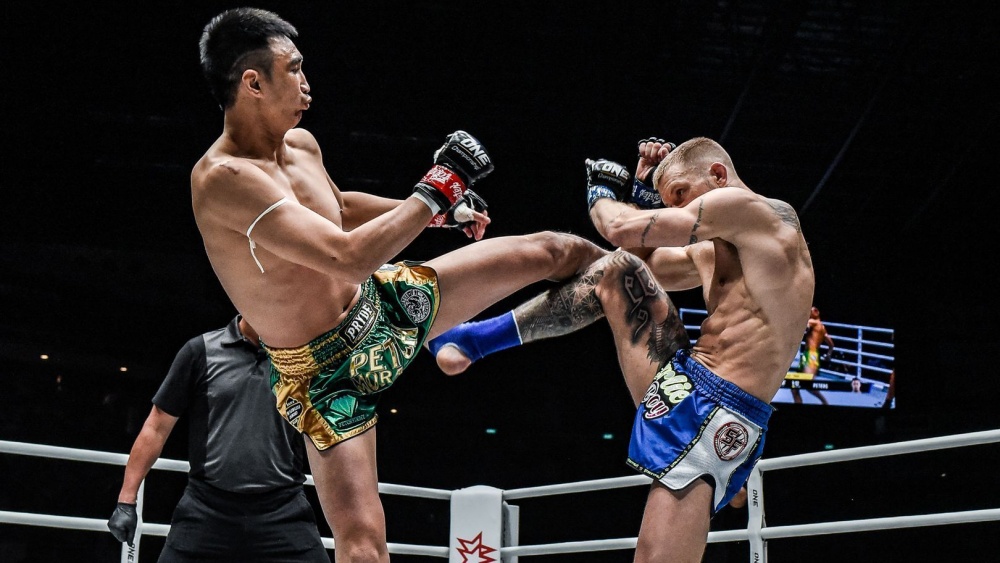
Tempo rounds, in the context of a fight, refer to the overall pacing and intensity of the different rounds within a Muay Thai match.
Here’s a breakdown of tempo rounds in a Muay Thai fight:
- Rounds 1 And 2: The initial rounds of a Muay Thai fight often start with a slower tempo. Fighters tend to be cautious, using these rounds to assess their opponent, establish their range, and analyse their opponent’s techniques and tendencies. They may focus on maintaining a defensive stance and gradually initiating their offensive attacks.
- Round 3: In the third round, the tempo typically increases as fighters aim to assert their dominance and gain an advantage. They may intensify their offensive moves, throwing more strikes and combinations, while also employing defensive tactics to counter their opponent’s attacks.
- Round 4 Or Early Round 5: This stage of the fight is often the most intense and action-packed. The tempo reaches its peak as fighters display their conditioning, technical skills, and strategic adjustments. They may engage in aggressive exchanges, aiming for significant strikes, effective combinations, or even a knockout to secure a definitive lead.
- Late Round 5: Towards the end of the match, the tempo may slightly taper out. Fighters may focus on maintaining their lead, employing defensive strategies, and avoiding unnecessary risks. They might utilise footwork and clinch techniques to control the pace and limit their opponent’s opportunities for a comeback.
It’s important to note that the specific tempo and pace can vary depending on the fighters’ styles, strategies, conditioning, and the dynamics of the match itself. Each fight presents a unique set of circumstances that can influence how the tempo unfolds in each round. Adaptation to these changing rhythms and maximising scoring opportunities within the five-round structure are essential skills for Muay Thai fighters.
Potential Experimentation With Alternative Formats
In the future of Muay Thai, different organisations may also consider adopting modified rounds like ONE Championship, and MAX Muay Thai has initiated in the last few years, in order to cater to different audiences, meet specific goals, or innovate within the sport. This could lead to a diversification of formats across different organisations, events, and competitions.
- Shortened Rounds: Some organisations might consider reducing the number of rounds from the traditional five to three or even fewer. This could be aimed at attracting a wider audience, particularly those who prefer shorter, more fast-paced bouts. Shorter rounds could increase the overall excitement and engagement of casual fans, potentially broadening the appeal of Muay Thai.
- Hybrid Formats: Another potential approach is the adoption of hybrid formats, which ONE Championship utilises, where some matches feature three rounds while others maintain the traditional five-round structure. This approach could be applied selectively to specific events or divisions, allowing for flexibility and experimentation within the sport.
- Customising The Number Of Rounds Based On Specific Needs: Beyond organisational differences, customising the number of rounds based on specific needs could also be explored. This approach would involve tailoring the round structure to different types of matches, divisions, or even fighter preferences.
- Non-Title Fights: Non-title fights, which may not carry the same level of prestige and significance, could be conducted with a reduced number of rounds. This would provide an opportunity to showcase talent, entertain the audience, and allow fighters to compete more frequently without enduring the demands of a full five-round contest.
- Championship Matches: Championship fights could continue to maintain the traditional five-round format to emphasise the rigorous nature of competing for a title. The extended duration would test fighters’ endurance, mental fortitude, and overall skill set, ensuring that only the most elite competitors earn the coveted championship status.
- Fighter Agreement: Another possibility is to allow fighters to negotiate the number of rounds in their contracts. This would give them the flexibility to tailor the round structure based on their individual strengths, weaknesses, and preferred fighting style. Fighters who excel in shorter rounds may opt for three-round bouts, while those with exceptional endurance and a strategic approach may prefer five-round contests.
It’s important to note that while experimentation with alternative formats is possible, any changes to the round structure should carefully consider the impact on the sport’s tradition, integrity, and overall fan experience. The primary focus should be on maintaining the essence of Muay Thai while exploring innovations that enhance its appeal, competitiveness, and long-term sustainability.
In this debate about the future of Muay Thai, the arguments for both 3 rounds and 5 rounds have been presented. The case for 3 rounds highlights accessibility, viewer engagement, and fighter strategy, while the case for 5 rounds emphasises tradition, authenticity, technicality, and championship fights. Both sides bring valid points and considerations to the table, reflecting the diverse perspectives within the Muay Thai community.
Emphasising The Importance Of A Well-Informed Decision: When considering any potential changes to Muay Thai, it is crucial to make well-informed decisions. This requires extensive research, analysis of data, and consultation with experts, fighters, trainers, and fans. The impact on fighter safety, fan engagement, and the sport’s cultural heritage should be carefully weighed to ensure that any modifications align with the best interests of Muay Thai as a whole.
Acknowledgement That The Future Of Muay Thai Will Depend On Various Factors: The future of Muay Thai will be influenced by multiple factors, including evolving societal trends, fan preferences, athlete safety considerations, and the vision of the sport’s governing bodies and organisations. It is essential to recognise that there is no one-size-fits-all solution. Adapting to the changing landscape of combat sports while preserving the core values and integrity of Muay Thai will be key to its sustained growth and success.
Encouragement For Continued Dialogue And Exploration Within The Sport’s Community: The debate surrounding the number of rounds in Muay Thai represents a healthy discourse within the sport’s community. Encouraging ongoing dialogue, exchange of ideas, and exploration of innovative approaches is important. Collaborative efforts involving fighters, trainers, officials, and fans can contribute to finding the right balance that aligns with the evolution of Muay Thai while honouring its rich heritage.
Conclusion
Ultimately, the future of Muay Thai will be shaped by careful consideration of the arguments for both 3 rounds and 5 rounds, making well-informed decisions, and maintaining an open dialogue within the sport’s community. By respecting tradition, embracing innovation, prioritising fighter safety, and ensuring an engaging experience for fans, Muay Thai can continue to thrive as a dynamic and beloved combat sport in the years to come.
You may also like:
